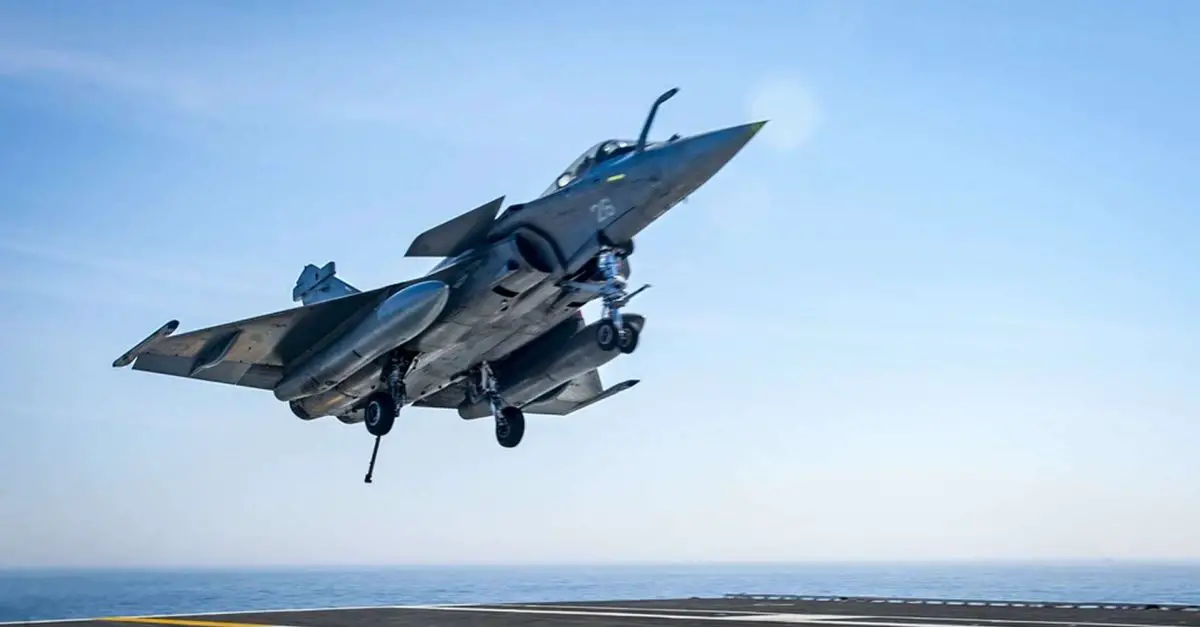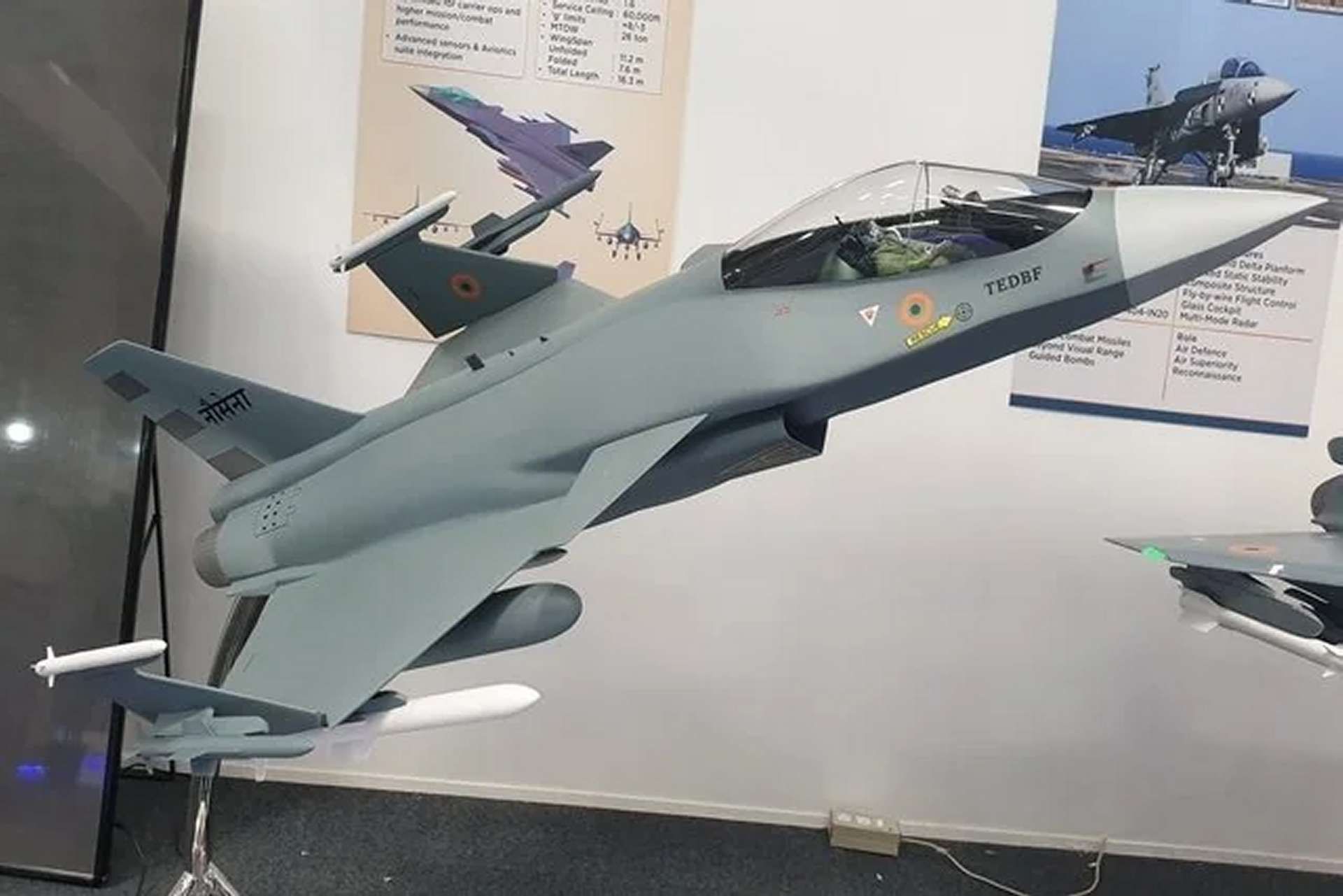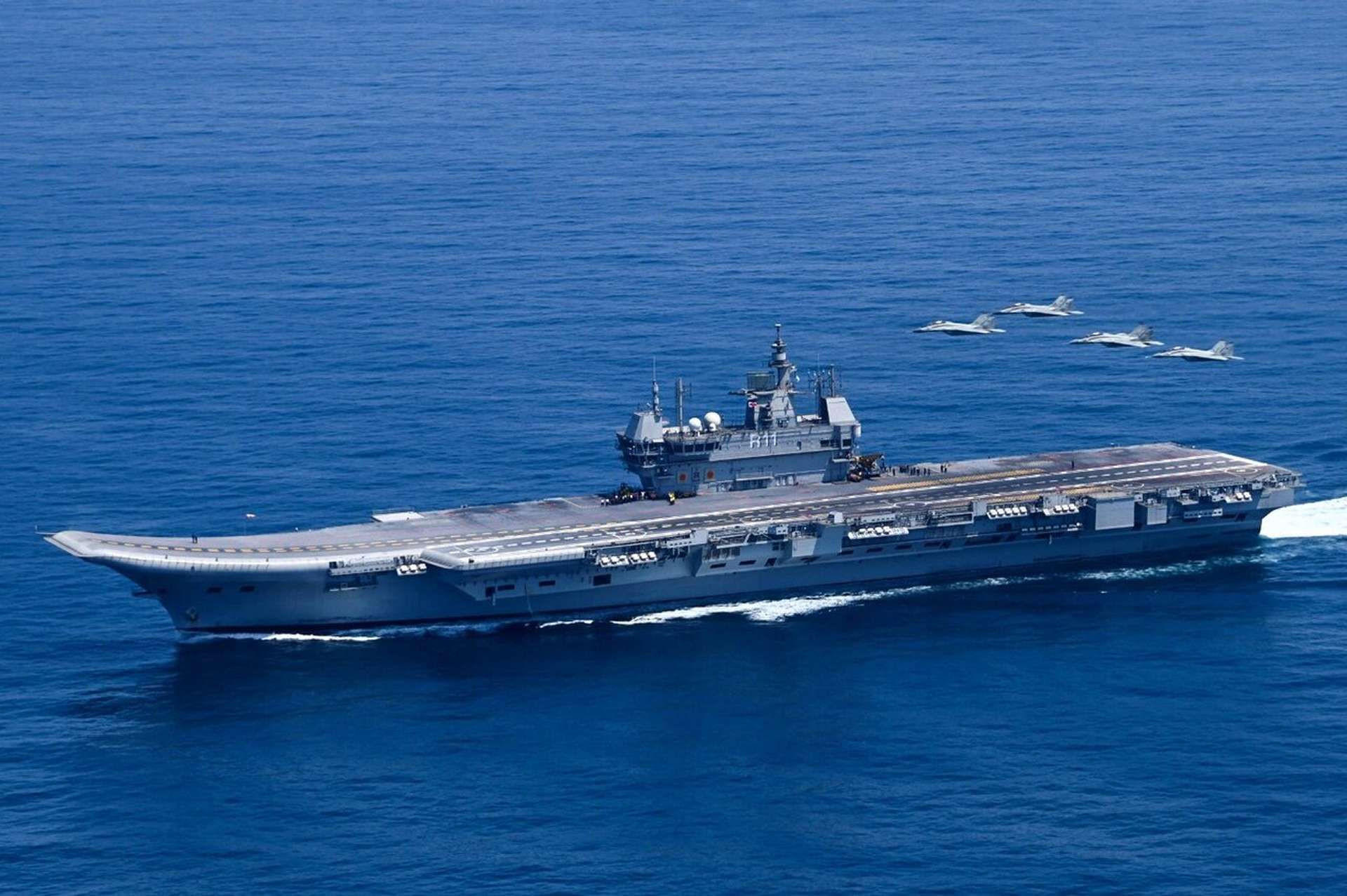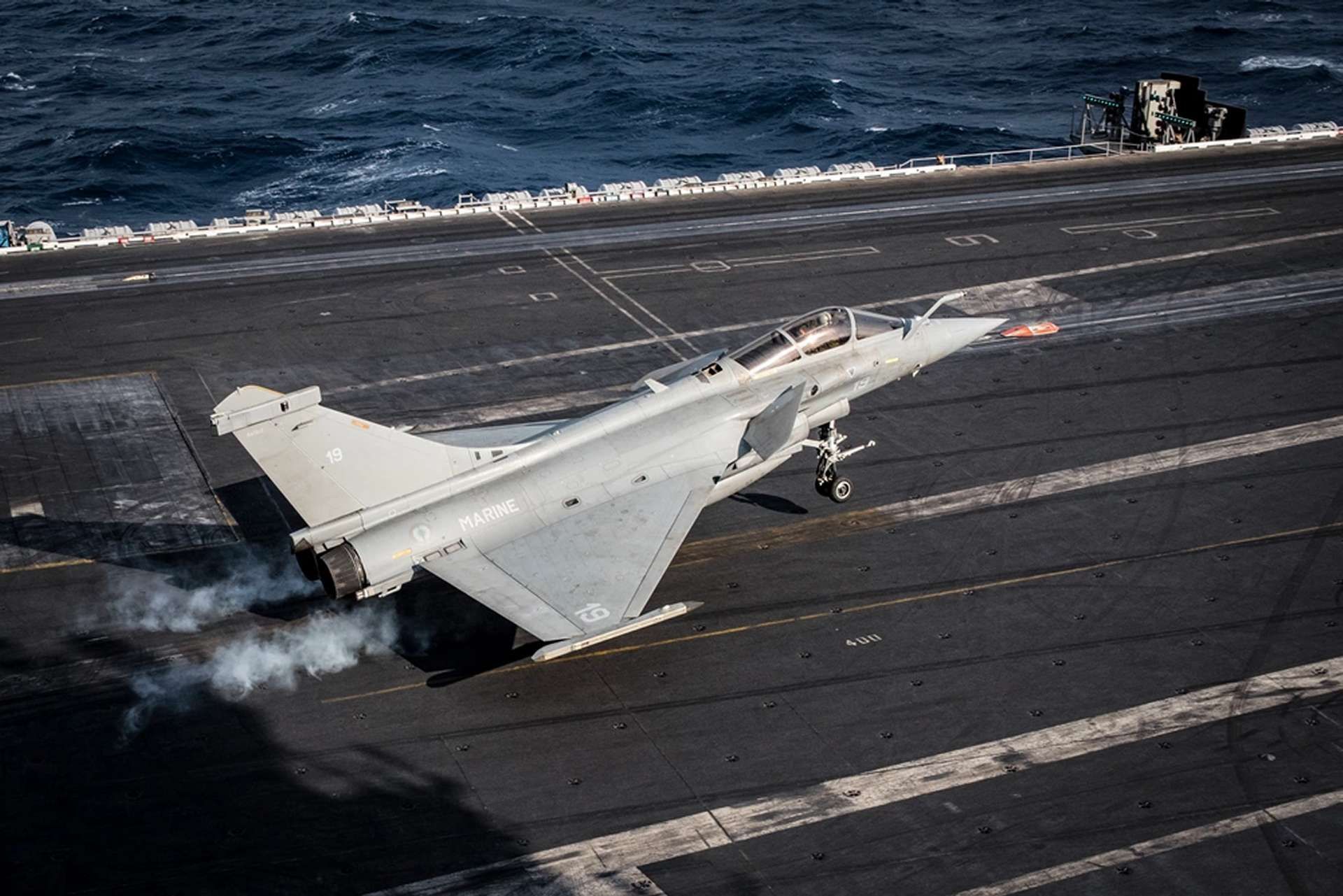Breaking News
India likely behind new Rafale deal for 26 Rafale Marine jets for INS Vikrant aircraft carrier.
According to La Tribune on September 3, 2024, India is likely to be the country behind a potential new contract for the sale of Rafale fighter jets, as suggested by Dassault Aviation CEO Éric Trappier in an interview with Europe 1 on August 30, 2024. The prospective deal could involve the sale of 26 Rafale Marine jets intended to equip the INS Vikrant, India's first aircraft carrier built domestically.
Follow Army Recognition on Google News at this link

Introduced in 2001, the Dassault Rafale M, the naval variant of the Rafale multirole fighter, was developed to meet France's need for an aircraft capable of both air force and naval operations. (Picture source: US DoD)
Éric Trappier, Chairman and CEO of Dassault Aviation, mentioned the possibility of a new contract for French Rafale fighter jets being signed by the end of the year in a recent interview with Europe 1. This statement came shortly after France finalized an agreement with Serbia for the sale of twelve Rafale aircraft during President Emmanuel Macron's visit to Belgrade. According to La Tribune, Dassault Aviation is reportedly close to securing a contract for the sale of Rafale Marine jets to India, with an expectation that it could be concluded by the end of 2024.
In 2023, India was in negotiations with France over a $6 billion deal to acquire 26 Rafale Marine fighter jets, which would include 22 single-seat and 4 twin-seat trainer versions, to strengthen the capabilities of its aircraft carriers, INS Vikrant and INS Vikramaditya. This procurement decision followed extensive evaluations and trials of the Rafale Marine and the American F/A-18 Super Hornet, with the Rafale being selected in July 2023 due to its perceived suitability for India's carrier-based operations.
The acquisition aims to address a shortage of aircraft within the Indian Navy and replace the aging MiG-29K fleet, which has faced issues such as low serviceability and several crashes. The Defence Acquisition Council of India has approved the procurement, and the deal was expected to be finalized soon. The Rafale M is considered an interim solution while India develops its indigenous Twin-Engine Deck-Based Fighter (TEDBF) program, expected to be operational by 2031.

The Rafale M is considered an interim solution while India develops its indigenous Twin-Engine Deck-Based Fighter (TEDBF) program, expected to be operational by 2031. (Picture source: Reddit)
According to La Tribune, negotiations for the deal are largely complete, except for discussions involving the European missile manufacturer MBDA, which are contributing to delays. The Indian Navy has expressed a requirement for an initial batch of 26 aircraft to equip the INS Vikrant. Sources indicate that Dassault Aviation and its partners in the Team Rafale consortium, including Thales and Safran, have largely concluded negotiations with New Delhi regarding the sale of the 26 Rafale Marine jets.
Technical requirements, such as the use of reinforced titanium landing gear for carrier operations, have been addressed. However, finalizing the agreement is pending the outcome of discussions with MBDA, which is reportedly renegotiating specific clauses related to missile pricing, partly due to inflation. Such negotiations can be lengthy, especially in complex markets like India.
Trappier’s remarks suggest progress in negotiations with India, which previously purchased 36 Rafale jets for its Air Force in 2016, a contract that has been fully executed with all aircraft delivered. The new transaction might include one or two second-hand Rafale Marine jets out of the 26 requested, potentially to be used for training Indian naval pilots. Furthermore, the deal may present an opportunity for the French Navy, which currently operates three squadrons of Rafale jets, to order new planes to replace the first Rafale Marine units that entered service in 2002 and compensate for the four aircraft that have been lost in accidents.

INS Vikrant, India’s first domestically built aircraft carrier, was commissioned in 2022 and has a displacement of 45,000 tons with the capacity to carry 30 aircraft. (Picture source: Indian MoD)
The Indian Navy's requirement for 26 aircraft to equip the INS Vikrant is aligned with its objective of maintaining a consistent fleet across its Air Force and Naval aviation units. In December 2022, India received the final aircraft from its previous order of 36 Rafales, and both Rafale squadrons in the Indian Air Force are now operational. Trials of the Rafale Marine were a critical part of India's evaluation process, with tests conducted in January 2022 at a facility in Goa designed to replicate the deck of an Indian aircraft carrier.
The Rafale's export sales have now exceeded those of its predecessor, the Mirage 2000, which had 286 units sold to international customers. To date, Dassault Aviation and France have sold 297 Rafale jets, including 24 used aircraft. These sales include 55 to Egypt, 36 to Qatar, 36 to India, 24 to Greece (12 of which are second-hand), 80 to the United Arab Emirates, 12 used jets to Croatia, 42 to Indonesia, and 12 to Serbia. If the contract with India for 26 Rafale Marine jets is finalized, the total number of Rafale aircraft sold could increase to 323 units. The anticipated contract with India would further add to the ongoing series of Rafale sales worldwide.
The Dassault Rafale is a French twin-engine, canard delta-wing, multirole fighter aircraft developed by Dassault Aviation. Its development began in the late 1970s when the French Air Force and Navy sought a new aircraft to replace their aging fleets. France initially participated in a multinational effort to create a "Future European Fighter Aircraft," but disagreements over specifications and work distribution led France to pursue its own design. The Rafale A, a technology demonstrator, first flew in 1986. Despite delays caused by budget constraints after the Cold War, the Rafale entered service in 2001 and has since been deployed in various combat operations in Afghanistan, Libya, Mali, Iraq, and Syria.

The Rafale M has been used in various missions and is capable of speeds up to Mach 1.8, with a combat radius exceeding 1,852 kilometers and a maximum takeoff weight of 24,500 kilograms. (Picture source: US DoD)
The Dassault Rafale M, the naval variant of the Rafale multirole fighter, was developed to meet France's need for an aircraft capable of both air force and naval operations. After France chose to pursue its own path, the Rafale M was specifically designed for carrier-based operations and was introduced into the French Navy in 2001. It features modifications such as a strengthened airframe, reinforced undercarriage, and a tailhook for landing on aircraft carriers, making it suitable for naval aviation.
The Rafale M has been used in various missions and is capable of speeds up to Mach 1.8, with a combat radius exceeding 1,852 kilometers and a maximum takeoff weight of 24,500 kilograms. It can carry a range of weapons, including air-to-air missiles, air-to-surface missiles, and precision-guided bombs, and is equipped with technologies such as the Thales RBE2 AESA radar and the SPECTRA electronic warfare suite, as well as advanced sensor fusion. The Rafale M has seen service in conflicts including Afghanistan, Libya, Mali, Iraq, and Syria.
The primary operator of the Rafale M is the French Navy, which deploys these aircraft from its flagship aircraft carrier, the Charles de Gaulle. The Rafale M is also being considered by other navies, such as the Indian Navy, as a potential replacement for its aging MiG-29K fleet, due to its compatibility with existing infrastructure and interoperability with the Indian Air Force's Rafale jets.
Notably, the Rafale jet is designed to carry nearly its own weight in weaponry. The aircraft's empty weight is approximately 10,000 kilograms, and it can carry up to 9,500 kilograms of external payload, which includes weapons and fuel tanks. The maximum takeoff weight of the Rafale is about 24,500 kilograms, and it is equipped with 14 hardpoints for mounting various armaments, allowing it to conduct a wide range of missions.


























